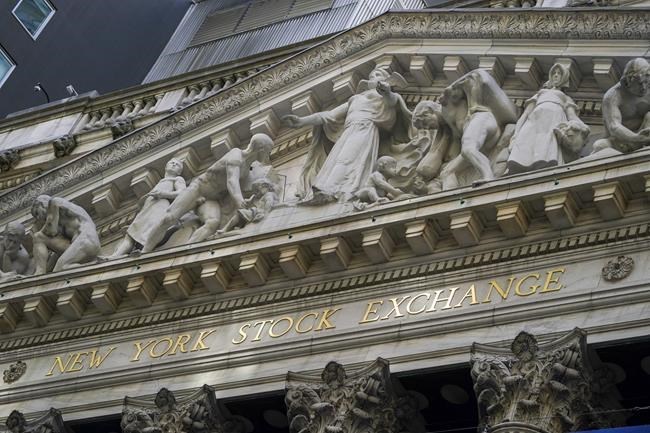NEW YORK ŌĆö Stocks ended a wobbly day with mixed results on Wall Street as markets continue to be unstable amid worries about a possible recession. The volatile trading came a day after the Dow Jones Industrial Average followed other major U.S. indexes into a bear market. The S&P 500 slipped 0.2%, the Dow fell a bit more and the Nasdaq composite wound up with a gain of 0.2%. With just a few days left in September, stocks are heading for another losing month as markets fear that the higher interest rates being used to fight inflation could help knock the economy into a downturn.
THIS IS A BREAKING NEWS UPDATE. APŌĆÖs earlier story follows below.
Stocks gave up some of their early gains in afternoon trading on Wall Street Tuesday as markets stagger amid recession worries.
The volatile trading comes a day after a broad sell-off sent the Dow Jones Industrial Average into a bear market, joining other major U.S. indexes.
The S&P 500 fell 0.3% as of 3:25 p.m. Eastern. The Dow fell 141 points, or 0.5%, to 29,120 and the Nasdaq edged 0.1% higher. The indexes are on pace for their sixth consecutive loss.
Banks, household goods makers and communications companies were among the biggest weights on the market. Bank of America fell 1.5%, Procter & Gamble fell 2.3% and Comcast slipped 2.6%.
Energy stocks gained ground as U.S. oil prices rose 2.3%. Exxon Mobil rose 2.4%.
Small company stocks held up better than the broader market. The Russell 2000 rose 0.4%.
Major indexes remain in an extended slump. With just a few days left in September, stocks are heading for another losing month as markets fear that the higher interest rates being used to fight inflation could knock the economy into a recession.
The S&P 500 is down roughly 8% in September and has been in a bear market since June, when it had fallen more than 20% below its all-time high set on Jan. 4. The DowŌĆÖs drop on Monday put it in the same company as the benchmark index and the tech-heavy Nasdaq.
Central banks around the world have been raising interest rates in an effort to make borrowing more expensive and cool the hottest inflation in decades. The Federal Reserve has been particularly aggressive and raised its benchmark rate, which affects many consumer and business loans, again last week. It now sits at a range of 3% to 3.25%. It was at virtually zero at the start of the year.
The Fed also released a forecast suggesting its benchmark rate could be 4.4% by the yearŌĆÖs end, a full percentage point higher than it envisioned in June.
Wall Street is worried that the Fed will hit the brakes too hard on an already slowing economy and veer it into a recession. The higher interest rates have been weighing on stocks, especially pricier technology companies, which tend to look less attractive to investors as rates rise.
Bond yields were mostly higher Tuesday. The yield on the 2-year Treasury, which tends to follow expectations for Federal Reserve action, fell to 4.31% from 4.34% late Monday. It is trading at its highest level since 2007. The yield on the 10-year Treasury, which influences mortgage rates, rose to 3.97% from 3.93%.
Fears of a recession have grown as inflation remains stubbornly hot. Investors will be watching the next round of corporate earnings very closely to get a better sense of how companies are dealing with inflation. Companies will begin reporting their latest quarterly results in early October.
Investors are also closely watching the latest economic updates. Consumer confidence remains strong, despite higher prices on everything from food to clothing. The latest consumer confidence report for September from The Conference Board showed that than expected by economists.
The government will release its weekly report on unemployment benefits on Thursday, along with an updated report on second-quarter gross domestic product. On Friday, the government will release another report on personal income and spending that will help provide more details on where and how inflation is hurting consumer spending.
Damian J. Troise And Alex Veiga, The Associated Press



